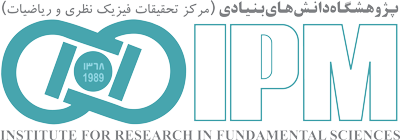“School of Astronomy”
Back to Papers HomeBack to Papers of School of Astronomy
| Paper IPM / Astronomy / 16581 |
|
||||||||||||||||||||||||||
| Abstract: | |||||||||||||||||||||||||||
|
We have examined the star formation history (SFH) of Andromeda VII (And VII), the brightest and most massive dwarf spheroidal (dSph) satellite of the Andromeda galaxy (M 31). Although M 31 is surrounded by several dSph companions with old stellar populations and low metallicity, it has a metal-rich stellar halo with an age of 6 8 Gyr. This indicates that any evolutionary association between the stellar halo of M 31 and its dSph system is frail. Therefore, the question is whether And VII (a high-metallicity dSph located 220 kpc from M 31), can be associated with M 31's young, metal-rich halo. Here, we perform the first reconstruction of the SFH of And VII employing long-period variable (LPV) stars. As the most-evolved asymptotic giant branch (AGB) and red supergiant (RSG) stars, the birth mass of LPVs can be determined by connecting their near-infrared photometry to theoretical evolutionary tracks. We found 55 LPV candidates within two half-light radii, using multi-epoch imaging with the Isaac Newton Telescope in the and bands. Based on their birth mass function, the star-formation rate (SFR) of And VII was obtained as a function of cosmic time. The main epoch of star formation occurred Gyr ago with a SFR of M yr . Over the past 6 Gyr, we find slow star formation, which continued until 500 Myr ago with a SFR M yr . We determined And VII's stellar mass M within a half-light radius arcmin and metallicity , and also derived its distance modulus of mag.
Download TeX format |
|||||||||||||||||||||||||||
| back to top | |||||||||||||||||||||||||||



















